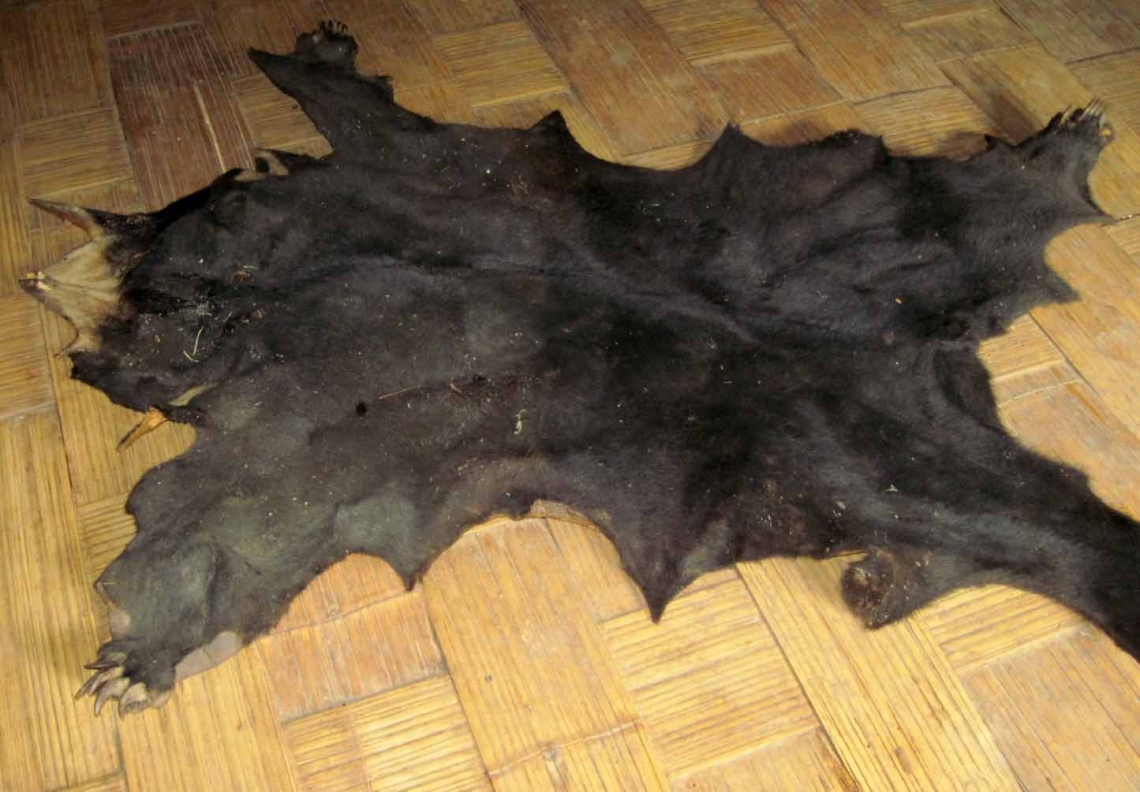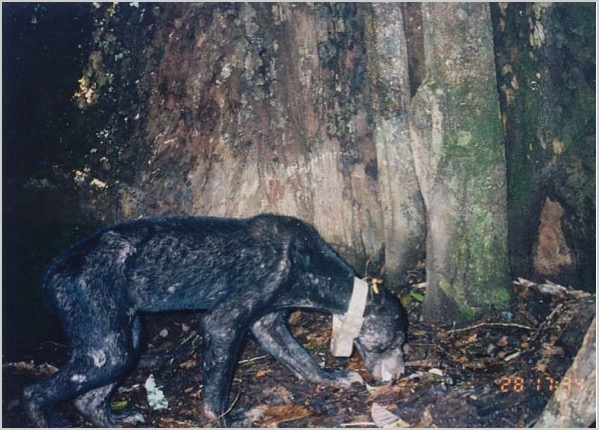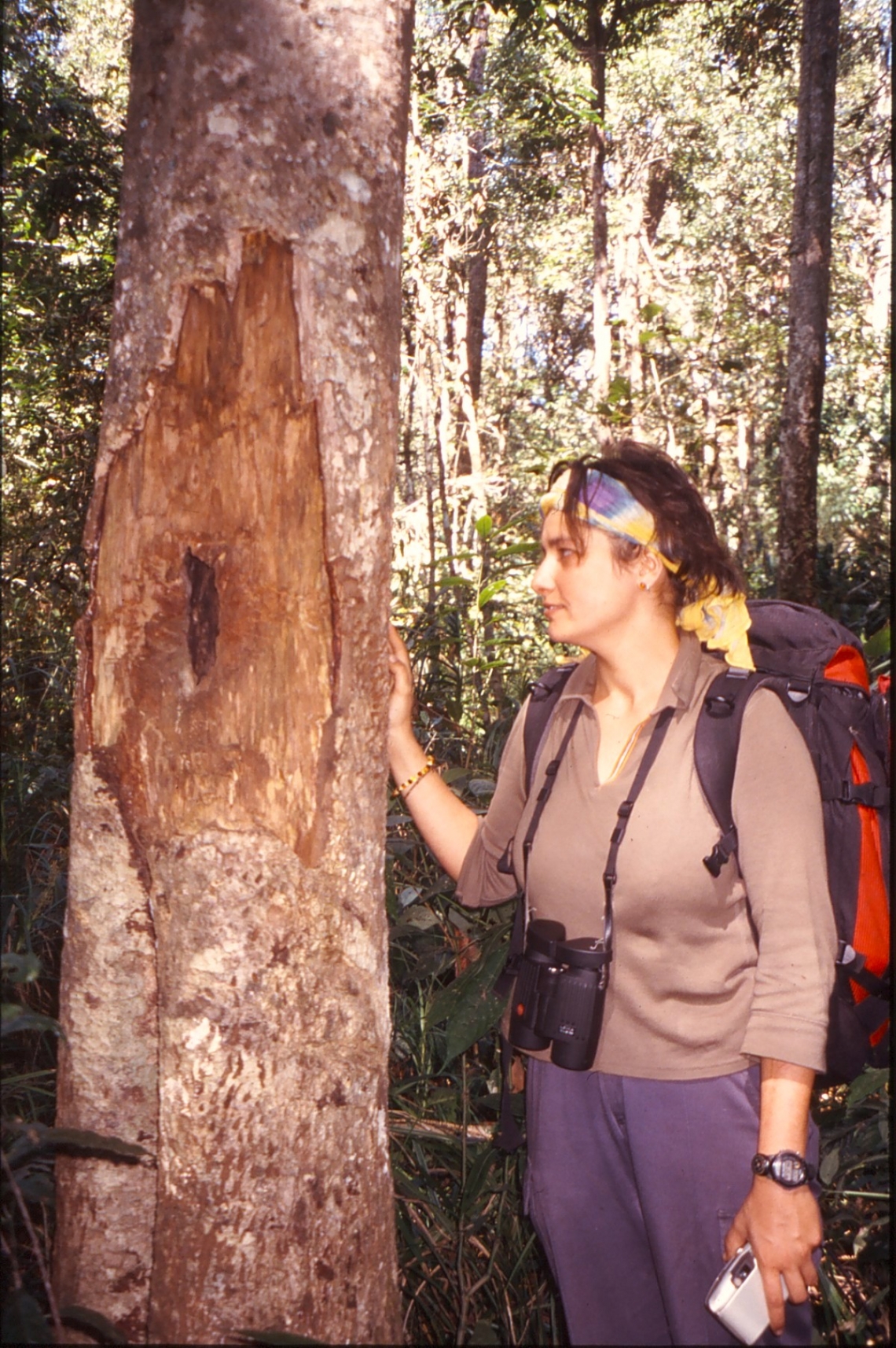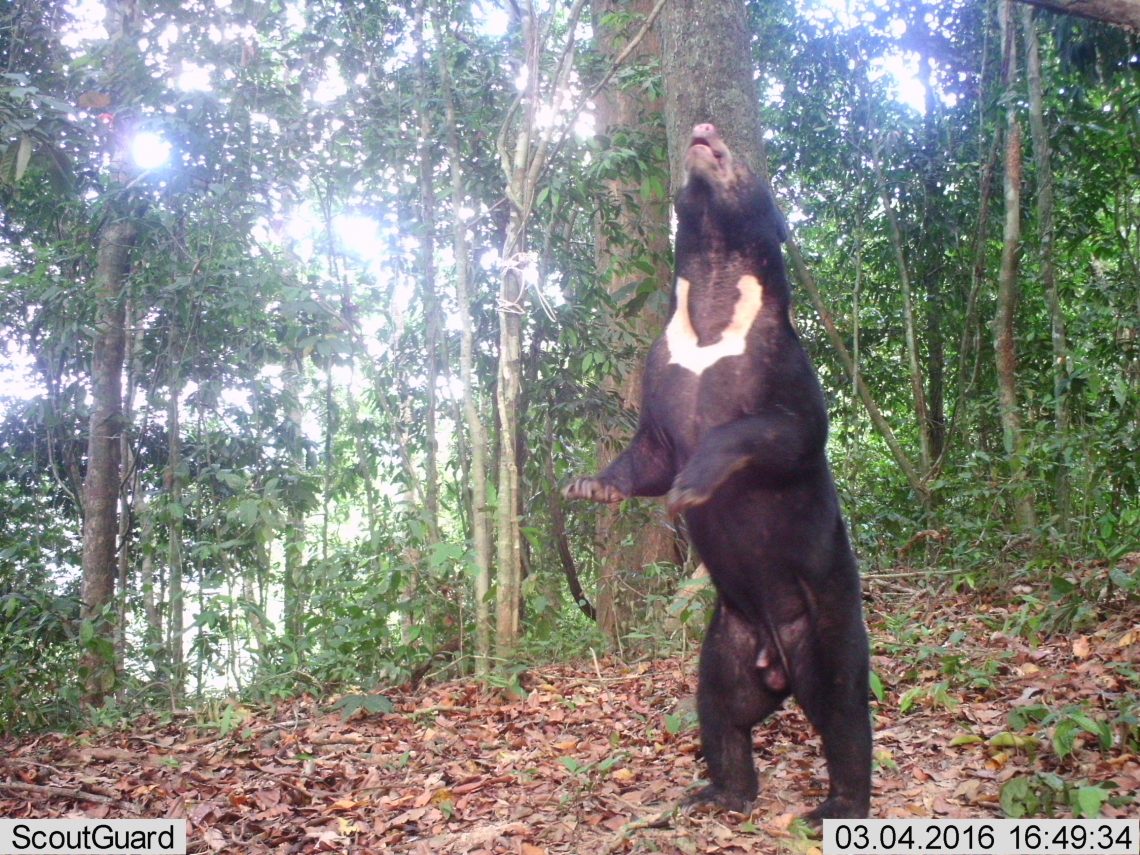Causes of mortality: No formal studies of sun bear mortality have been conducted. However, it is clear that widespread illegal snaring and hunting are major sources of mortality. Most snaring is indiscriminate, not aimed at sun bears, and in many cases they are able to pull free from or break light cable snares, resulting in severe injury or amputation of toes, feet, or legs. Some sun bears are killed intentionally when raiding crops or hunted for their parts, such as meat and gall bladder. Farmers may gain more by selling parts from a depredating sun bear than they would have from selling the crops that the sun bear damaged.
During lengthy inter-masting periods in the Sundaic regions, sun bears can lose considerable weight, and some starve. Starvation may be more common in this species than any other bear species.

Sun bear_H malayanus_Bangladesh near Myanmar border 2014_skin possible hybrid

Sun bear_H malayanus_Sabah Malaysia_starving bear during intermasting period_S T Wong
Population estimation methods: Sun bear populations are difficult to enumerate and monitor because they live in densely-forested areas with difficult access, are very secretive, and tend to avoid humans. The most commonly-employed methods for assessing populations are sign surveys, camera trapping, and interviews to extract local ecological knowledge. The climbing and foraging activities of sun bears create conspicuous signs in the forest, especially claw marks on trees and excavation of bees’ nests, and diggings in the ground if associated with tracks (to distinguish diggings of wild boar and others). Transects to quantify incidence of sign have popularly been used as an index of sun bear density, but the relationship between abundance of feeding sign and abundance of bears has never been studied (and likely varies with types and abundance of food). Sign surveys are particularly appropriate for estimating sun bear occupancy rather than abundance. Camera trapping is now the main method of choice for estimating sun bear occupancy. Often camera trapping is conducted as a general biodiversity survey, rather than focusing on sun bears.
Only one set of researchers, in Thailand, have estimated sun bear density using rigorous quantitative methods. They employed camera trapping to photograph the distinctive chest markings of sun bears and thereby identify individuals, enabling population estimation through a mark–recapture (resight) approach. To obtain photos of the chest mark required that each camera trapping station have a hanging bait, to entice bears to stand, and three cameras, so as to photograph the bear facing in any direction. This method is considerably more labor intensive than typical camera trapping or sign surveys, which explains why it is rarely used.
Genetic sampling to obtain population estimates has not yet been successfully employed on this species. Scats of sun bears quickly decay (in days or even hours), and their hair is short and tight, so barbed-wire hair traps, which are effective with other bears species, have not worked for sun bears. However, recent progress in obtaining hair samples has been made using duct tape wrapped (sticky side out) on trees: a shrimp paste lure on the tree spurred sun bears to rub their back on the tape and another bait prompted them to climb over the tape.

Sun bear_H malayanus_Kalimantan Indonesia_sign survey_D Garshelis

Sun bear_H malayanus_Kalimantan Indonesia_sign survey excavated Trigona nest_G Fredriksson

Sun bear_H malayanus_Thailand_setting camera trap_D Ngoprasert

Sun bear_H malayanus_Thailand_baited camera trap photo showing individual chest marking large male_D Ngoprasert

Sun bear_H malayanus_Thailand_baited camera trap photo showing individual chest marking_D Ngoprasert
Local population estimates: The only actual population estimates for this species are from sites in Thailand, where density was 4–6 bears per 100 km2. Notably, although this was inside a national park, bears were still subjected to some poaching. Also, they lived together with about twice the number of Asiatic black bears.
The ratio of sun bears to Asiatic black bears varies significantly among sites where these two species occur sympatrically. Based on camera trapping records, yielding “catch rates” (photographs per 100 trapnights) or estimates of occupancy, sun bears were 10 x more prevalent than black bears at a site in northern Laos, and an average of 35 x more prevalent than black bears at sites in northern Myanmar, possibly skewed by poaching pressure
Country and global population estimates: There are no valid country or global level population estimates for sun bears.
Population trends: Range country experts consider sun bears to be declining across their range due to the combined and synergistic effects of deforestation and hunting. Range-wide, the species is estimated to have declined by >30% over the past 30 years, and this trend is expected to continue, given ongoing threats.
Sun bear population trends likely vary by site, depending mainly on hunting pressure. There are few cases, though, where any population monitoring has occurred.
Sun bear populations have recovered, given a nearby source population. In Indonesian Borneo (Kalimantan), sign density was monitored in heavily-burned forest and an adjacent unburned forest from 2000 to 2010. In the unburned forest, sun bear sign density was stable. Sun bear sign density dropped to essentially zero after the fire, as bears fled to the unburned forest. However, as the vegetation in this area recovered from the fire, bears returned.